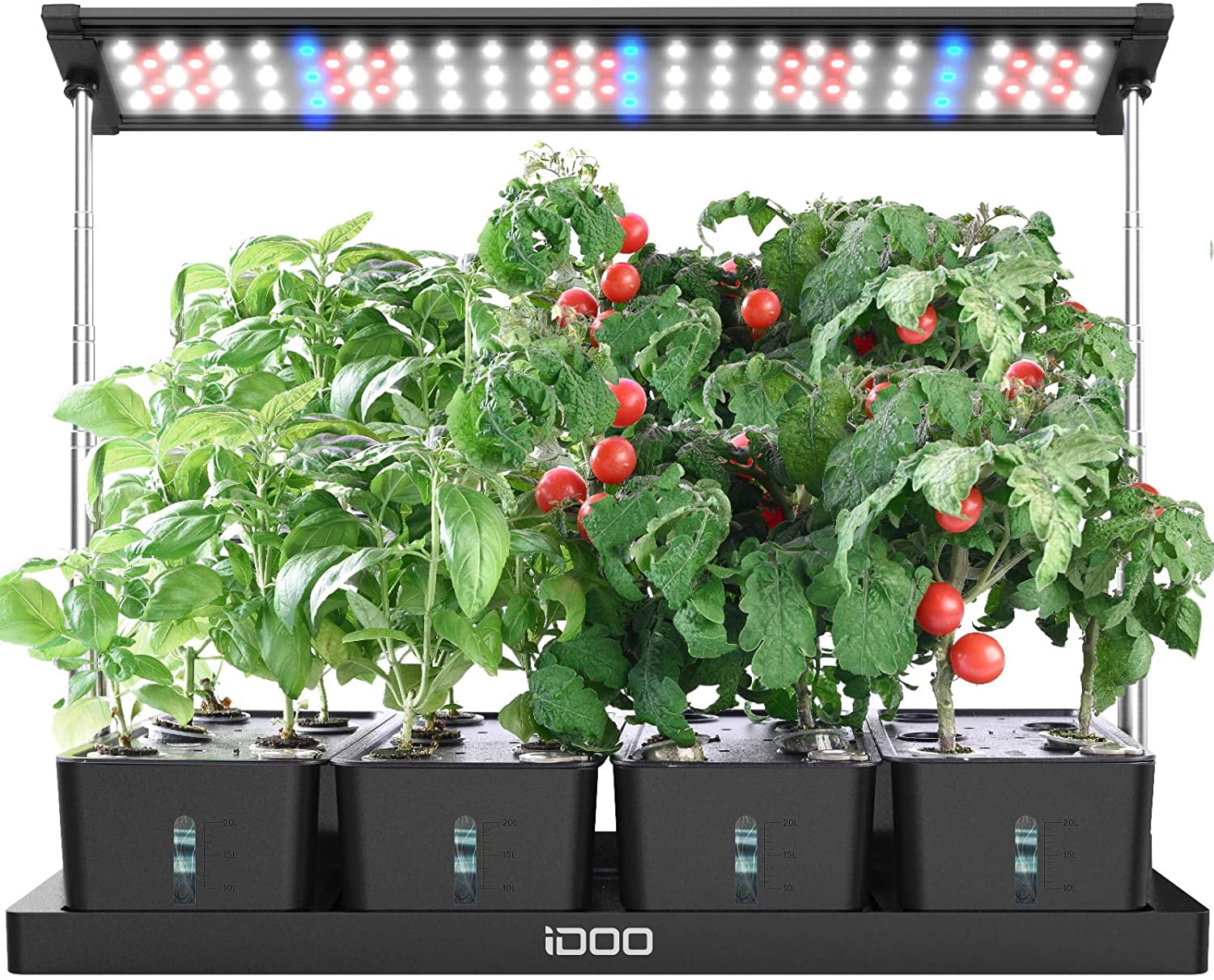Indoor Hydroponic Herb Growing Guide

Indoor Hydroponic Herb Growing Guide
Are you dreaming of a lush, green hydroponic herb garden right in your home? Indoor herb cultivation is not just a trend; it's a smart way to ensure you have fresh herbs year-round. Let's dive into the world of hydroponic herbs indoor growing systems and explore how you can set up your own urban herb farming oasis.
Why Choose Hydroponic Herb Growing?
Hydroponic gardening is a game-changer. Unlike traditional soil-based gardening, hydroponics allows plants to grow directly in water enriched with nutrients. This method offers several advantages:
- Faster Growth: Plants grow up to 50% faster.
- Space Efficiency: Perfect for small apartments or urban settings.
- Water Efficiency: Uses up to 90% less water than traditional gardening.
- Pest Control: Reduced risk of pests and diseases.
Understanding Hydroponic Systems
Before you dive into DIY hydroponic herbs, it's crucial to understand the different types of hydroponic systems. Here are the most common ones:
Wick System
The wick system is the simplest and most passive hydroponic method. It uses a wick to draw water and nutrients from a reservoir to the growing medium. This system is ideal for beginners due to its simplicity.
Deep Water Culture (DWC)
In a DWC system, plant roots are suspended in a nutrient-rich water solution. An air pump oxygenates the water, ensuring the roots get enough oxygen. This system is great for fast-growing herbs like basil and mint.
Nutrient Film Technique (NFT)
The NFT system involves a constant flow of nutrient-rich water over the roots. The plants are placed in channels, and the water is continuously recirculated. This method is efficient but requires more maintenance.
Setting Up Your Indoor Herb Cultivation System
Ready to set up your hydroponic herb garden? Here’s a step-by-step guide:
Choosing the Right System
Start by selecting the hydroponic system that best fits your needs and space. For beginners, the wick system or DWC are great choices.
Selecting Your Herbs
Not all herbs thrive in hydroponic systems. Some of the best herbs for hydroponic gardening include:
- Basil
- Mint
- Parsley
- Chives
- Oregano
Gathering Materials
You’ll need:
- A hydroponic system (or components to build your own)
- Growing medium (like rockwool or clay pellets)
- Nutrient solution
- pH test kit
- Seeds or seedlings
Assembling Your System
Follow the instructions for your chosen system to assemble it. Ensure everything is secure and the water flow is functioning correctly.
Planting Your Herbs
Place your seeds or seedlings in the growing medium. Make sure the roots are well-supported and have access to the nutrient solution.
Maintaining Your Hydroponic Herb Garden
Once your system is set up, regular maintenance is key to keeping your herbs healthy.
Monitoring pH Levels
The pH level of your nutrient solution is crucial. Most herbs prefer a pH between 5.5 and 6.5. Use a pH test kit to monitor and adjust as needed.
Nutrient Management
Regularly check and replenish the nutrient solution. Different herbs have different nutrient requirements, so do your research.
Lighting
Herbs need plenty of light. If natural light is limited, consider using grow lights. LED grow lights are energy-efficient and effective.
Temperature and Humidity
Maintain a consistent temperature between 65-75°F (18-24°C) and humidity levels around 40-60%.
Troubleshooting Common Issues
Even with the best care, issues can arise. Here are some common problems and solutions:
Yellowing Leaves
Yellowing leaves can indicate a nutrient deficiency or overwatering. Check your nutrient solution and adjust as needed.
Pest Infestations
While hydroponic systems reduce the risk of pests, they can still occur. Use organic pesticides or insecticidal soaps to control infestations.
Root Rot
Root rot is often caused by poor oxygenation. Ensure your system has adequate aeration and that the water is properly oxygenated.
Harvesting Your Herbs
Once your herbs are mature, it’s time to harvest. Here are some tips:
- Basil: Pinch off the top leaves to encourage bushier growth.
- Mint: Cut stems back to encourage new growth.
- Parsley: Harvest outer leaves first.
Advanced Techniques for Urban Herb Farming
For those looking to take their herb growing systems to the next level, consider these advanced techniques:
Automation
Automate your system with timers for lighting and watering. This ensures consistent care even when you’re away.
Vertical Gardening
Maximize space with vertical gardening. Stack your hydroponic systems or use wall-mounted units.
Experimenting with Varieties
Try growing different varieties of herbs to see what thrives best in your system.
Resources for Further Learning
Want to learn more about hydroponic gardening? Check out this comprehensive guide for in-depth information and tips.
Conclusion
Indoor hydroponic herb growing is a rewarding hobby that provides fresh, homegrown herbs year-round. With the right system, care, and a bit of patience, you can create a thriving hydroponic herb garden in your own home. Whether you’re a beginner or an experienced gardener, hydroponic herbs indoor growing systems offer a unique and efficient way to cultivate your favorite herbs.
FAQs
What are the best herbs for hydroponic gardening?
- Basil, mint, parsley, chives, and oregano are some of the best herbs for hydroponic systems.
How often should I change the nutrient solution?
- The frequency depends on the system and the herbs, but generally, you should change the solution every 2-4 weeks.
Can I use tap water for my hydroponic system?
- Tap water can be used, but it’s best to let it sit for 24 hours to allow chlorine to evaporate. Alternatively, use filtered or distilled water.
How much light do herbs need in a hydroponic system?
- Most herbs need 14-16 hours of light per day. If natural light is insufficient, use grow lights.
What should I do if my herbs are wilting?
- Wilting can be caused by several factors, including overwatering, underwatering, or nutrient deficiencies. Check your system’s water and nutrient levels and adjust as needed.
0 Response to "Indoor Hydroponic Herb Growing Guide"
Post a Comment